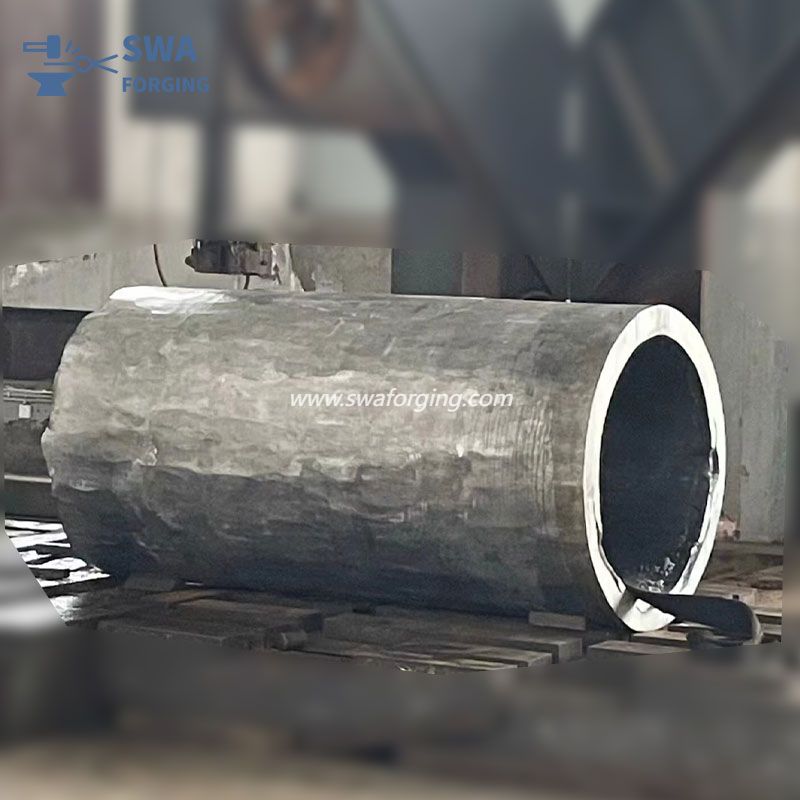Exploring The Manufacturing Process of Aluminum Forging
Views: 0 Author: Site Editor Publish Time: 2024-05-07 Origin: Site








Aluminum forging is a manufacturing method that produces high-quality components with excellent mechanical properties. It is commonly used in the aerospace, automotive, and defense industries, where the demand for lightweight and durable parts is high. The process involves shaping aluminum alloys under high pressure and temperature to create complex components with uniform grain structures. This article aims to explore the manufacturing process of aluminum forging in detail and its benefits in various industries.
1. Raw Material Selection
The first step in aluminum forging is selecting high-quality raw materials, which are typically aluminum alloys that have been designed specifically for forging. These alloys commonly comprise aluminum and other metals such as copper, zinc, and magnesium. They are chosen for their excellent strength, corrosion resistance, and creep resistance. The most commonly used aluminum forging alloys include 2XXX, 6XXX, and 7XXX series alloys. The selection of the appropriate alloy can have a significant impact on the performance of the final component.
2. Billet Preparation
The next step is to prepare the raw material into billets, which are typically cylindrical in shape and have a diameter that is slightly larger than the final component size. The billets are heated to a temperature between 700°C and 900°C to make them more malleable and easier to forge. The temperature and heating duration depend on the alloy being used and the component's size and shape.
3. Forging Process
The forging process involves compressing the billets using a forging press, hammer, or drop hammer. During this process, the billets are deformed, and their grains are realigned in the direction of deformation. This process results in a uniform grain structure that increases the component's strength and toughness. The forging process takes place in various stages, each with different temperatures and pressures, to achieve the desired shape and properties.
4. Heat Treatment
After the forging process, the component is cooled to room temperature and undergoes a heat treatment process. This involves heating the component to a specific temperature for a specified duration and then cooling it at a controlled rate. The heat treatment process helps to improve the component's strength, ductility, and toughness.
5. Machining and Finishing
The final step involves machining and finishing the component to the required shape and surface finish. The machining and finishing process can include various operations such as drilling, milling, grinding, and polishing. Finally, the component undergoes quality inspection to ensure that it meets the required specifications and performance criteria.

Benefits of Aluminum Forging
Aluminum forging has various benefits, making it a popular manufacturing method in various industries. Some of these benefits include:
1. High Strength-to-Weight Ratio: Aluminum forging produces components that are lightweight yet highly durable. This makes them ideal for applications where weight reduction is critical.
2. Excellent Mechanical Properties: Aluminum forging results in components with uniform grain structures that have excellent mechanical properties. They are resistant to fatigue, corrosion, and wear, making them ideal for demanding environments.
3. Design Flexibility: Aluminum forging allows for the production of complex shapes with high precision and repeatability. This makes it an ideal method for producing critical components with tight tolerances.
4. Cost-Effective: Despite the initial investment required for tooling and equipment, aluminum forging is a cost-effective manufacturing method for producing high-quality components in large quantities.
Conclusion
Aluminum forging is a critical manufacturing method that produces high-strength components with excellent mechanical properties. The process involves selecting high-quality raw materials, preparing them into billets, forging them into the desired shape, heat-treating them, and finishing them to the required specifications. The benefits of aluminum forging have made it a popular manufacturing method in various industries, including aerospace, automotive, and defense. Through continued research and innovation, the process of aluminum forging will continue to play an important role in the production of critical components in various industries.
- Article title
- Article summary
- Article content
- Multi Field Search

